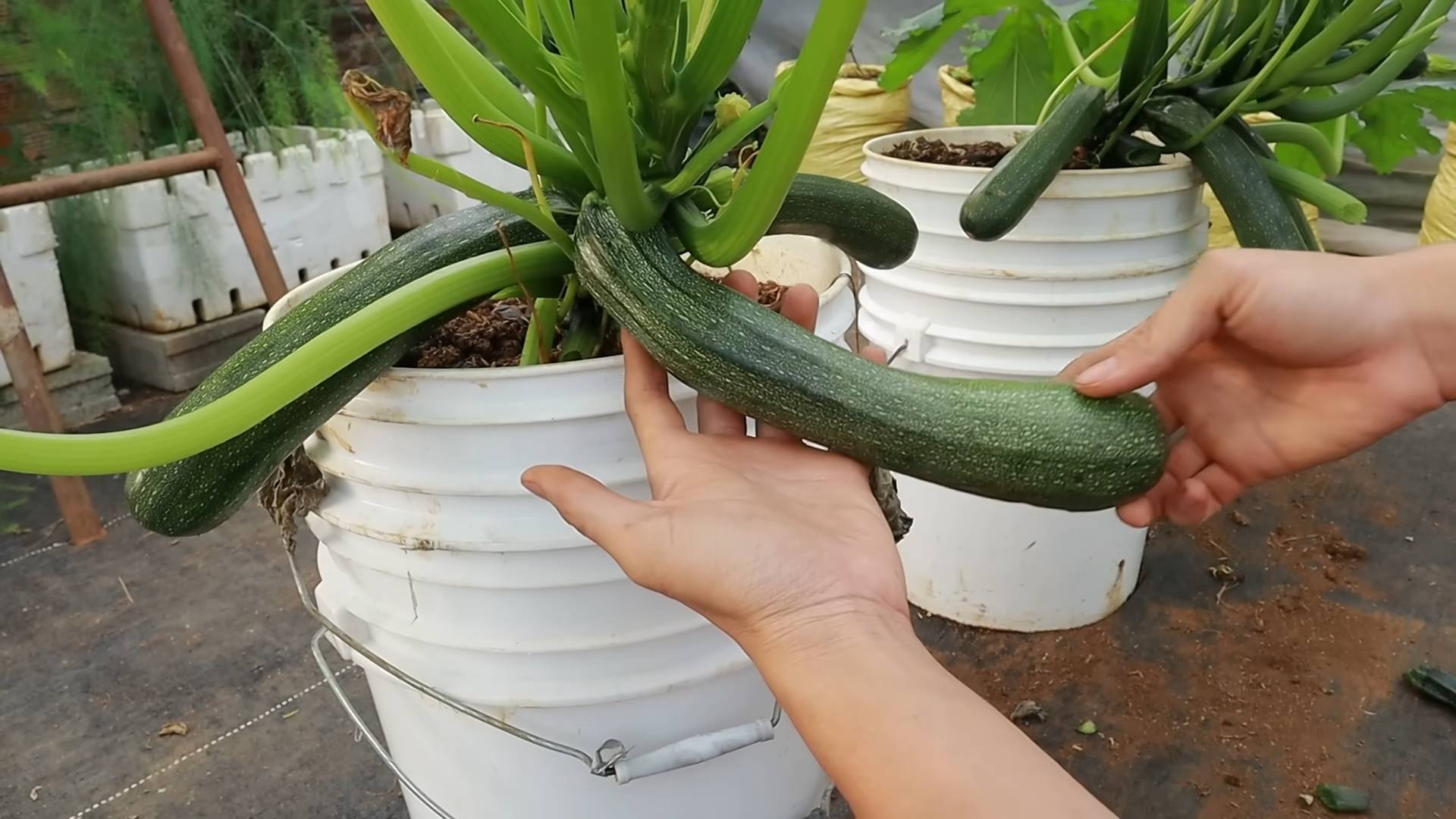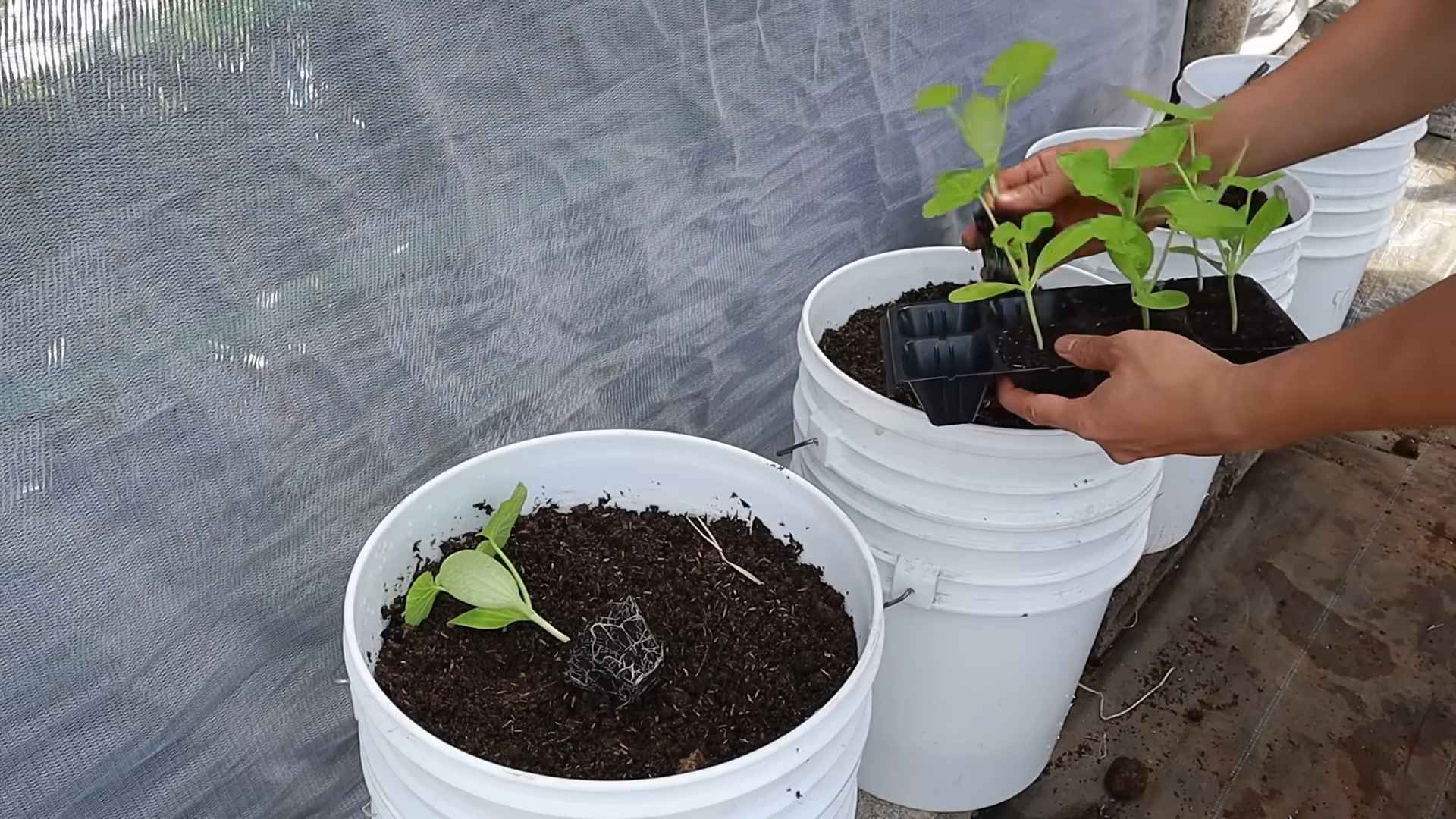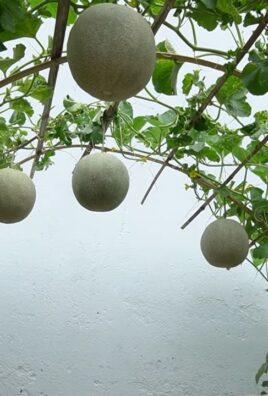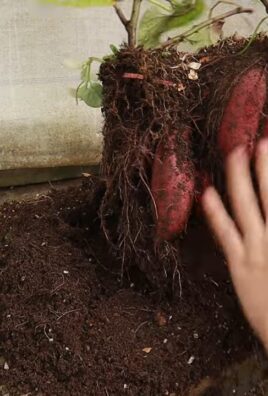Zucchini Harvest Tips: Are you drowning in zucchini? I know the feeling! One minute you’re admiring those cute little green sprouts, and the next, you’re facing a mountain of oversized gourds. Don’t let your hard work go to waste! This article is your ultimate guide to mastering the zucchini harvest, ensuring you get the most delicious and productive yield from your garden.
For centuries, zucchini, a member of the squash family, has been a staple in gardens around the world. Originating in the Americas, it made its way to Europe and beyond, becoming a beloved ingredient in countless cuisines. But let’s be honest, the rapid growth of zucchini can be overwhelming!
That’s where these Zucchini Harvest Tips come in. I’m going to share my tried-and-true methods for knowing exactly when to pick your zucchini, how to harvest them properly to encourage continued growth, and even some creative ways to use up that abundant harvest. No more baseball bat-sized zucchini lurking in your garden! Let’s get started and turn that zucchini glut into a garden-to-table feast!

Harvesting Zucchini Like a Pro: A DIY Guide
Hey there, fellow gardeners! Zucchini season is upon us, and if you’re anything like me, you’re probably drowning in these green beauties. But knowing when and how to harvest them properly is key to enjoying their delicious flavor and keeping your plants producing. So, let’s dive into my tried-and-true methods for harvesting zucchini like a pro!
Knowing When to Harvest: The Goldilocks Zone
The biggest mistake I see people make is letting their zucchini grow too big. Trust me, I’ve been there! You think, “Oh, I’ll just let it get a little bigger,” and then BAM! You’re staring at a baseball bat-sized zucchini that’s mostly seeds and not much flavor.
Here’s the deal: zucchini are best when they’re young and tender. We’re aiming for the Goldilocks zone – not too small, not too big, just right!
* **Size Matters:** Generally, aim for zucchini that are 6-8 inches long. This is the sweet spot for flavor and texture. Some varieties might be slightly different, so check your seed packet for specific recommendations.
* **Skin Check:** The skin should be smooth, glossy, and free of blemishes. If it’s dull or starting to get tough, it’s probably past its prime.
* **Nail Test:** Gently press your fingernail into the skin. If it easily punctures, it’s ready to harvest. If it’s hard and resistant, give it a little more time (but not too much!).
* **Regular Inspection:** Zucchini grow incredibly fast, especially in warm weather. I recommend checking your plants every day or two during peak season. You’ll be surprised how quickly they can double in size!
* **Don’t Fear the Flowers:** You can even harvest zucchini blossoms! They’re delicious stuffed and fried. Just be sure to leave enough blossoms on the plant to produce fruit.
Tools of the Trade: What You’ll Need
Before you head out to the garden, gather your supplies. Having the right tools makes the job much easier and prevents damage to your plants.
* **Sharp Knife or Pruning Shears:** This is essential for making a clean cut and avoiding tearing the plant. I prefer pruning shears because they’re easier to maneuver in tight spaces.
* **Gloves (Optional):** Zucchini plants can be a bit prickly, so gloves can protect your hands.
* **Basket or Bag:** You’ll need something to carry your harvest back to the kitchen.
* **First Aid Kit (Just in Case):** Accidents happen! It’s always a good idea to have a basic first aid kit handy.
The Harvesting Process: Step-by-Step
Alright, let’s get down to business! Here’s my step-by-step guide to harvesting zucchini:
1. **Identify Ready Zucchini:** Walk through your garden and carefully inspect each zucchini. Use the size, skin, and nail tests to determine which ones are ready to harvest.
2. **Position Yourself:** Get into a comfortable position where you can easily reach the zucchini without straining or damaging the plant.
3. **Make the Cut:** Using your sharp knife or pruning shears, cut the zucchini stem about 2 inches from the fruit. Make a clean, angled cut to prevent water from pooling on the cut surface, which can lead to rot.
4. **Handle with Care:** Gently cradle the zucchini in your hand as you detach it from the plant. Avoid pulling or yanking, as this can damage the plant.
5. **Inspect the Plant:** After harvesting, take a moment to inspect the plant for any signs of pests or diseases. Address any issues promptly to keep your plants healthy and productive.
6. **Repeat:** Continue harvesting any other zucchini that are ready.
7. **Transport Your Harvest:** Carefully place your harvested zucchini in your basket or bag and carry them back to the kitchen.
Dealing with Monster Zucchini: When You Miss the Window
Okay, so maybe you missed a few days of checking your plants, and now you have a couple of giant zucchini staring back at you. Don’t despair! They’re not completely useless.
* **Seed Saving:** If you’re interested in saving seeds for next year, a large zucchini is perfect. Let it mature on the vine until the skin is very hard. Then, harvest it, cut it open, and scoop out the seeds. Rinse the seeds, spread them out on a paper towel to dry, and store them in an airtight container in a cool, dark place.
* **Zucchini Bread and Muffins:** Even though the texture might be a bit coarser, you can still use large zucchini in baked goods like zucchini bread and muffins. Just be sure to remove the seeds and grate the zucchini before adding it to your recipe.
* **Composting:** If all else fails, you can always compost your oversized zucchini. They’ll break down and enrich your soil for next year’s garden.
Extending the Harvest: Tips for Continuous Production
Want to keep those zucchini coming all season long? Here are a few tips to maximize your harvest:
* **Regular Harvesting:** The more you harvest, the more your plants will produce. Don’t let zucchini get too big, as this signals to the plant that it’s time to stop producing.
* **Fertilizing:** Zucchini are heavy feeders, so give them a boost with a balanced fertilizer every few weeks.
* **Watering:** Keep the soil consistently moist, especially during hot, dry weather.
* **Pest and Disease Control:** Monitor your plants regularly for pests and diseases and take action promptly to prevent them from spreading.
* **Succession Planting:** Plant new zucchini seeds every few weeks to ensure a continuous harvest throughout the season.
Storing Your Zucchini: Keeping Them Fresh
So, you’ve harvested a bounty of zucchini. Now what? Here’s how to store them properly to keep them fresh for as long as possible:
* **Refrigeration:** Store unwashed zucchini in a perforated plastic bag in the crisper drawer of your refrigerator. They should last for about a week.
* **Freezing:** For longer storage, you can freeze zucchini. Wash, trim, and grate the zucchini. Then, blanch it in boiling water for 2-3 minutes, drain it well, and pack it into freezer bags or containers. Frozen zucchini will last for several months.
* **Pickling:** Pickled zucchini is a delicious way to preserve your harvest. There are many recipes available online.
* **Dehydrating:** Dehydrated zucchini chips are a healthy and tasty snack.
Troubleshooting: Common Zucchini Problems
Even with the best care, you might encounter some problems with your zucchini plants. Here are a few common issues and how to address them:
* **Powdery Mildew:** This fungal disease appears as a white, powdery coating on the leaves. Improve air circulation around the plants and treat with a fungicide if necessary.
* **Squash Vine Borers:** These pests can tunnel into the stems of your zucchini plants and kill them. Look for small holes in the stems and remove any borers you find. You can also wrap the stems with aluminum foil to prevent borers from entering.
* **Blossom End Rot:** This condition causes the ends of the zucchini to rot. It’s usually caused by a calcium deficiency or inconsistent watering. Ensure your soil is rich in calcium and water your plants regularly.
* **Lack of Pollination:** If your zucchini are developing but then shriveling up and dying, it could be due to a lack of pollination. Hand-pollinate the flowers by transferring pollen from the male flowers to the female flowers.
Zucchini Recipes: Delicious Ways to Enjoy Your Harvest
Now for the fun part! Here are a few of my favorite zucchini recipes:
* **Zucchini Bread:** A classic for a reason!
* **Zucchini Fritters:** Crispy and delicious, perfect as an appetizer or side dish.
* **Stuffed Zucchini Blossoms:** A gourmet treat that’s surprisingly easy to make.
* **Zucchini Noodles (Zoodles):** A healthy and low-carb alternative to pasta.
* **Grilled Zucchini:** Simple and flavorful, perfect for summer barbecues.
* **Zucchini Soup:** A creamy and comforting soup that’s perfect for cooler weather.
So there you have it! My comprehensive guide to harvesting zucchini like a pro. With a little knowledge and effort, you can enjoy a bountiful harvest of delicious zucchini all season long. Happy gardening!

Conclusion
So, there you have it! Mastering these simple yet effective zucchini harvest tips can truly transform your gardening experience. No more baseball bat-sized zucchinis lurking in the shadows, no more wasted produce, and definitely no more feeling overwhelmed by the sheer abundance of this prolific vegetable.
Why is this a must-try? Because it’s about more than just picking zucchinis. It’s about optimizing your garden’s yield, ensuring you get the most flavorful and tender fruits, and preventing your plants from becoming exhausted and ceasing production. It’s about taking control and enjoying the fruits (or vegetables!) of your labor to the fullest.
Think of the possibilities! You can use your perfectly sized zucchinis for everything from classic zucchini bread and fritters to grilled skewers and spiralized noodles. You can even experiment with stuffing them with savory fillings or adding them to soups and stews for a boost of nutrients and flavor.
Variations and Suggestions:
* Succession Planting: To extend your zucchini harvest even further, consider succession planting. Plant new seeds every few weeks to ensure a continuous supply of fresh zucchinis throughout the growing season.
* Companion Planting: Plant zucchini alongside beneficial companion plants like marigolds, nasturtiums, or basil to deter pests and attract pollinators.
* Seed Saving: If you have a particularly productive or flavorful zucchini plant, consider saving its seeds for next year’s garden. Just be aware that zucchini can cross-pollinate, so you may not get the exact same variety.
* Blossom End Rot Prevention: Ensure consistent watering and adequate calcium levels in the soil to prevent blossom end rot, a common problem that can affect zucchini.
* Different Varieties: Explore different zucchini varieties! From the classic dark green to golden yellow and round varieties, there’s a zucchini out there for every taste and garden. Experiment and find your favorites!
Don’t let another zucchini season pass you by without implementing these simple strategies. Embrace the abundance, savor the flavor, and share the bounty with friends and neighbors. We encourage you to try these zucchini harvest tips in your own garden and see the difference they can make.
And most importantly, we want to hear about your experience! Share your photos, tips, and stories in the comments below. Let’s create a community of zucchini enthusiasts who are passionate about growing and enjoying this versatile vegetable. Happy harvesting!
Frequently Asked Questions (FAQ)
Why is it important to harvest zucchini regularly?
Harvesting zucchini regularly, especially when they are young and tender (around 6-8 inches long), is crucial for several reasons. First, it encourages the plant to continue producing more fruit. If you leave zucchinis on the vine for too long, the plant will focus its energy on ripening those large fruits, signaling that it has completed its reproductive cycle and reducing further production. Second, smaller zucchinis are generally more flavorful and have a better texture. They have fewer seeds and a more delicate skin. Finally, harvesting regularly prevents zucchinis from becoming overgrown and taking over your garden!
How do I know when a zucchini is ripe and ready to harvest?
The ideal size for harvesting zucchini is typically between 6 and 8 inches long. The skin should be smooth and firm, and the zucchini should feel heavy for its size. You can also gently press your fingernail into the skin; if it easily punctures, the zucchini is ripe. Avoid harvesting zucchinis that are excessively large, as they tend to be less flavorful and have a tougher texture.
What is the best way to harvest zucchini without damaging the plant?
The best way to harvest zucchini is to use a sharp knife or pruning shears to cut the stem about 1-2 inches above the fruit. Avoid pulling or twisting the zucchini, as this can damage the plant and potentially introduce diseases. Be careful not to damage any nearby leaves or developing fruits.
Can I eat zucchini blossoms?
Yes, zucchini blossoms are edible and considered a delicacy in many cuisines. They can be stuffed, fried, or added to salads. Harvest the male blossoms (those without a small zucchini fruit attached) to avoid reducing your zucchini yield. Female blossoms (those with a small zucchini fruit attached) can also be harvested, but be mindful of how many you take, as each one represents a potential zucchini.
How should I store harvested zucchini?
Store harvested zucchini in the refrigerator, unwashed, in a plastic bag or container. They will typically last for about a week. Avoid storing them near ethylene-producing fruits like apples and bananas, as this can cause them to ripen and spoil more quickly.
What can I do with an overabundance of zucchini?
If you find yourself with more zucchini than you can possibly eat, there are many ways to preserve them. You can shred and freeze them for use in baking, pickle them, make zucchini relish, or even dehydrate them into zucchini chips. You can also share them with friends, neighbors, or donate them to a local food bank.
My zucchini plant is producing lots of flowers but no fruit. What could be the problem?
There are several reasons why your zucchini plant might be producing flowers but no fruit. One common cause is a lack of pollination. Zucchini plants require pollination to produce fruit, and if there are not enough bees or other pollinators in your area, you may need to hand-pollinate the flowers. Another possible cause is nutrient deficiency, particularly a lack of phosphorus or potassium. Make sure your soil is well-balanced and consider adding a fertilizer specifically formulated for vegetables. Extreme temperatures can also affect fruit set.
How do I prevent pests and diseases from affecting my zucchini plants?
To prevent pests and diseases from affecting your zucchini plants, practice good garden hygiene. Remove any dead or diseased leaves promptly, and avoid overhead watering, which can create a humid environment that encourages fungal diseases. Use row covers to protect young plants from pests like squash vine borers and squash bugs. Regularly inspect your plants for signs of pests or diseases and take action promptly if you notice any problems. Companion planting with herbs like basil and marigolds can also help deter pests.
What are some creative ways to use zucchini in cooking?
Zucchini is an incredibly versatile vegetable that can be used in a wide variety of dishes. In addition to the classic zucchini bread and fritters, you can use it to make zucchini noodles (zoodles), add it to soups and stews, grill it, stuff it with savory fillings, or even use it as a pizza topping. Get creative and experiment with different recipes to discover your favorite ways to enjoy this delicious and nutritious vegetable.
How can I tell if my zucchini plant has squash vine borers?
Squash vine borers are a common pest that can devastate zucchini plants. Signs of squash vine borer infestation include sudden wilting of the plant, small holes in the stem near the base, and the presence of sawdust-like frass near the holes. If you suspect squash vine borers, you can try to remove them by carefully slitting the stem open and extracting the larvae. You can also use row covers to prevent the moths from laying their eggs on your plants.




Leave a Comment